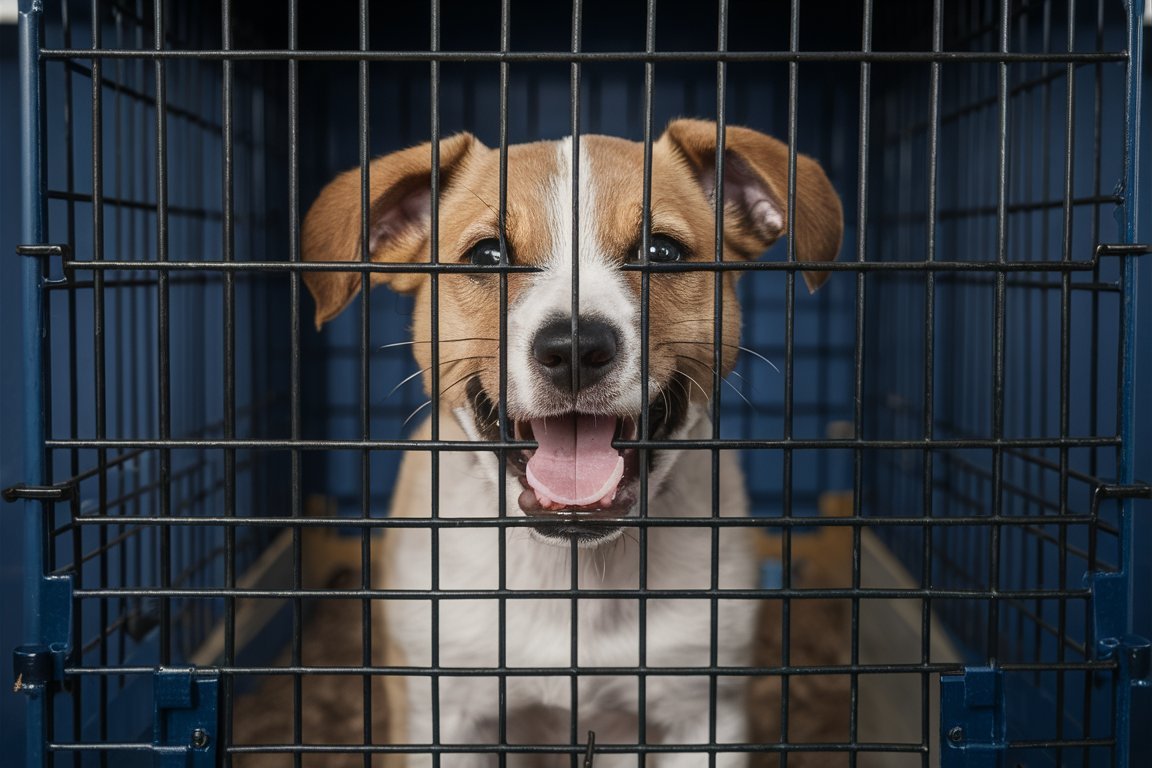Why Is My Puppy Screaming in the Crate for Hours? How to Calm Your Puppy Down
Bringing home a new puppy is an exciting experience filled with joy and affection. However, the reality of puppy ownership comes with its own set of challenges. One of the most common issues new pet parents face is a puppy screaming in the crate for hours. If you’ve found yourself in this situation, you’re not alone. In this article, we’ll explore why puppies cry in their crates and provide you with effective strategies to help your little one feel more at ease.
Understanding Why Puppies Cry in the Crate
First, it’s important to understand that your puppy isn’t crying just to make you feel guilty. Puppies are naturally social creatures, and they’re used to being close to their mothers and littermates. Suddenly being alone in a crate can be a scary experience for them.
Let’s consider the story of Sarah and her puppy Max. Sarah was thrilled to bring Max home, but the first night was far from peaceful. Max cried, whined, and screamed in his crate for hours, leaving Sarah exhausted and concerned. Like many new dog owners, Sarah didn’t know what to do, and she started to wonder if she was doing something wrong.
Common Reasons for Crate Crying
There are several reasons why your puppy might be crying in their crate:
- Separation Anxiety: Puppies are used to the constant presence of their mother and siblings. Being suddenly left alone can cause them significant stress.
- Fear of the Unknown: A crate is a new environment for a puppy. The unfamiliar space can be intimidating, leading to feelings of fear and insecurity.
- Needing to Go Potty: Puppies have small bladders and might need to relieve themselves during the night. Crying could be their way of telling you they need to go outside.
- Hunger or Thirst: If your puppy didn’t get enough to eat or drink before bed, they might cry out due to hunger or thirst.
- Too Much Energy: If your puppy hasn’t burned off enough energy during the day, they might cry because they’re not tired enough to sleep.
Step-by-Step Guide to Calm Your Puppy
Now that we understand why puppies cry, let’s dive into a step-by-step guide to help your puppy feel more comfortable in their crate.
1. Create a Cozy Crate Environment
Your puppy’s crate should be a safe and comfortable space. Line it with soft bedding and include a few toys. Consider using a puppy crate pad designed to provide extra comfort. Some pet parents find success with using a puppy calming spray to help their puppy relax.
You can even place a piece of clothing with your scent in the crate. The familiar smell can help soothe your puppy and make them feel less alone.
2. Gradual Crate Training
Crate training is a gradual process. Start by letting your puppy explore the crate on their own. Place treats inside to encourage them to enter voluntarily. Once your puppy is comfortable going in and out, begin closing the door for short periods while you’re nearby.
Increase the time your puppy spends in the crate gradually. This step-by-step approach helps your puppy associate the crate with positive experiences rather than fear.
3. Establish a Bedtime Routine
A consistent bedtime routine can signal to your puppy that it’s time to wind down. Take them out for a potty break before bed, and then spend some quiet time together. Avoid high-energy activities right before bed, as this can make it harder for your puppy to settle down.
Sarah found that giving Max a small treat and a few minutes of gentle petting before bedtime helped him relax and settle into his crate more easily.
4. Don’t Rush to Let Them Out
When your puppy cries, your first instinct might be to let them out immediately. However, this can teach them that crying equals freedom. Instead, wait for a brief pause in the crying before opening the crate. This helps your puppy learn that quiet behavior is rewarded.
Of course, if your puppy’s crying is due to a genuine need, like needing to go outside, it’s important to address that promptly.
5. Be Patient and Consistent
Consistency is key when it comes to crate training. Stick to a routine, and be patient with your puppy. It’s normal for puppies to cry in their crate, especially in the beginning. With time, most puppies learn to feel comfortable and secure in their crates.
Sarah’s persistence paid off. After a few weeks of consistent crate training, Max started to see his crate as a cozy den where he could rest peacefully.
When to Seek Help
If your puppy continues to cry in their crate despite your best efforts, it might be time to seek professional help. A dog trainer or veterinarian can provide guidance tailored to your puppy’s specific needs. In some cases, extreme anxiety might require more specialized intervention.
Choosing the Right Crate for Your Puppy
The type of crate you choose can make a big difference in your puppy’s comfort level. Consider investing in a high-quality crate that is appropriately sized for your puppy. Crates that are too large can make a puppy feel insecure, while crates that are too small can be uncomfortable.
Look for a crate that has a divider panel, which allows the crate to grow with your puppy. This is especially helpful during the crate training process.
Conclusion: Building a Positive Crate Experience
Helping your puppy feel comfortable in their crate is an essential part of their development. It takes time, patience, and consistency, but the end result is a happy puppy who sees their crate as a safe haven.
If you’re dealing with a puppy screaming in crate for hours, remember that you’re not alone. Many pet parents have been through this phase and come out the other side with a well-adjusted, crate-trained dog. By following the steps outlined above, you can make the crate a positive experience for your puppy—and give yourself some peace of mind in the process.

